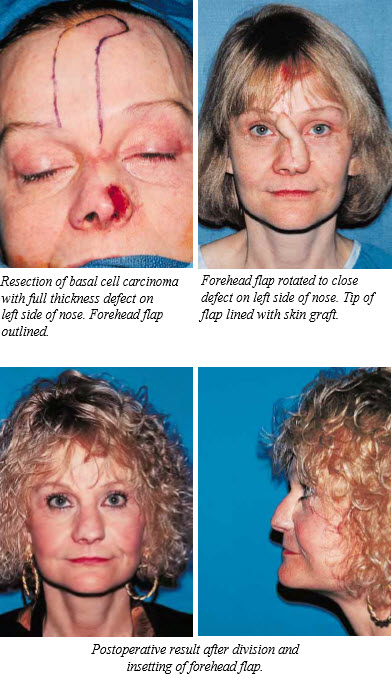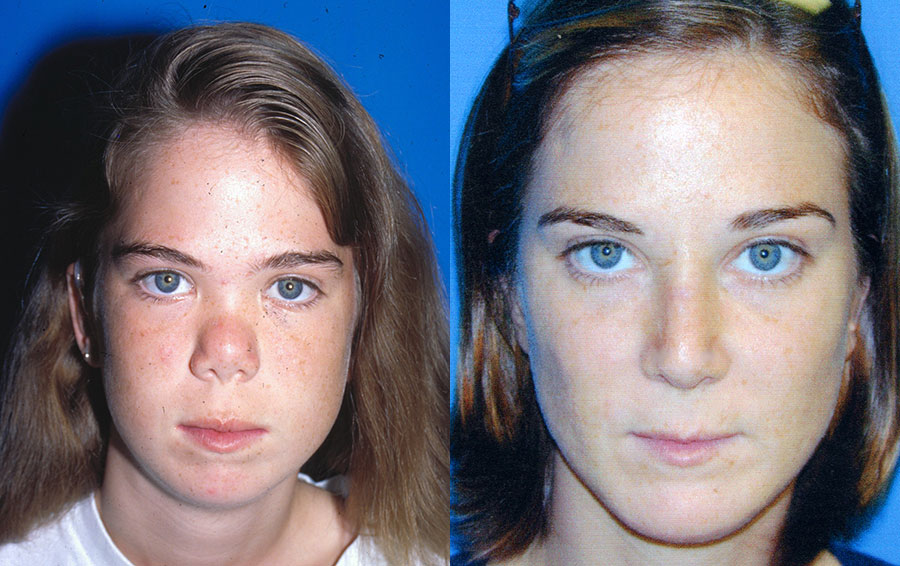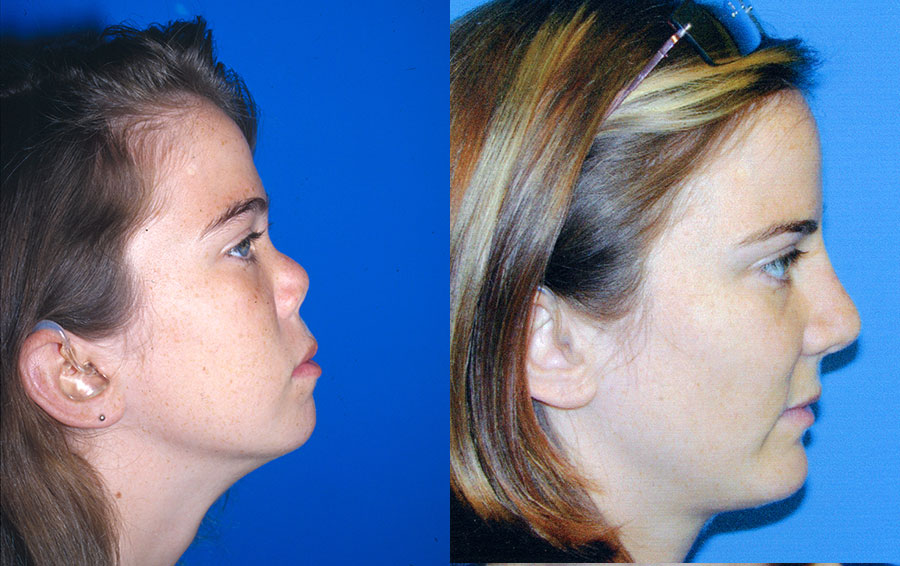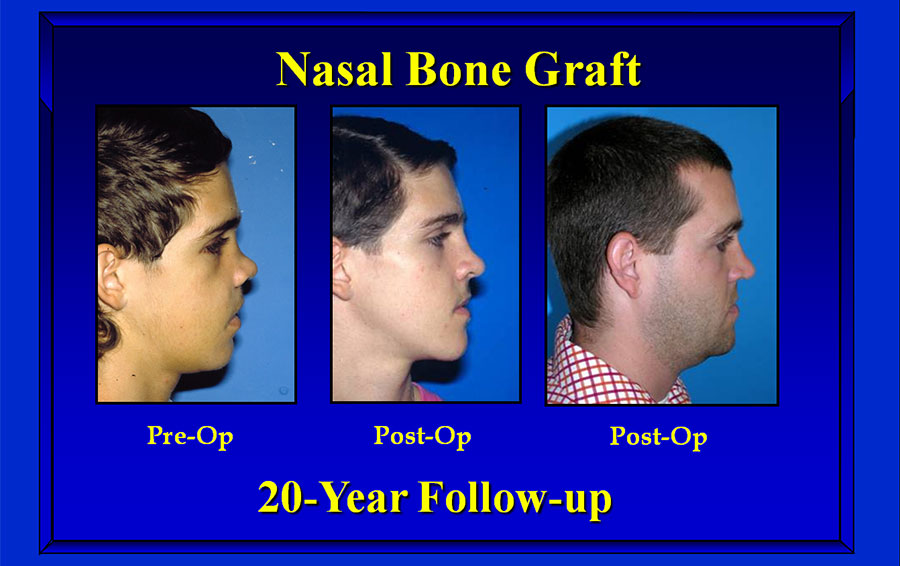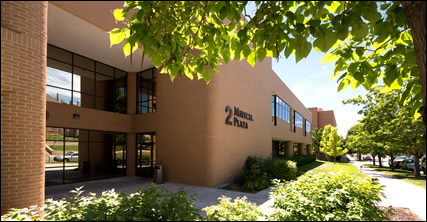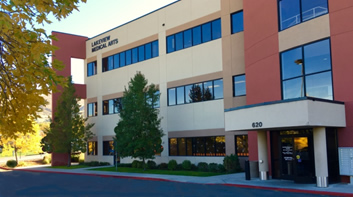Nasal Reconstruction
A properly proportioned, well placed nose can have a dramatic impact on one’s facial appearance. Nasal surgery involves a wide spectrum of procedures ranging from cosmetic rhinoplasty to total nasal reconstruction. Basic rhinoplasty surgery involves the correction or reshaping of existing nasal structures, whereas more extensive cases will require that the craniofacial surgeon actually construct a part of the nose that may be missing or badly misshapened due to disease or trauma. Meticulous attention to detail when repairing or reconstructing the nasal lining, skeletal support, or skin covering is essential to obtain a structure that is fully functional as well as pleasing to the eye.
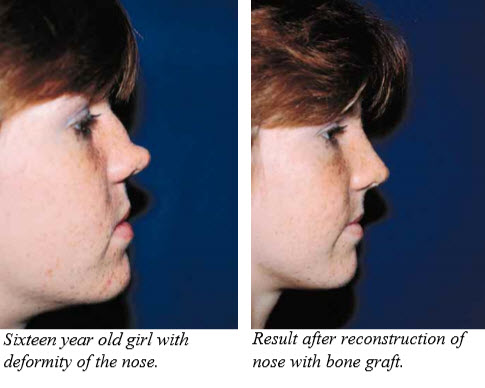
When large defects of the nose are present from tumor resection or trauma, flap tissue provides the best aesthetic coverage. The most common flap used for major nasal reconstruction is the forehead flap. This reliable flap can supply a large area of skin with good color match making it suitable for partial or total nasal reconstruction.
Reconstruction of the nasal skeletal framework is frequently necessary in patients with congenital or traumatic deformities. This support is best obtained using bone or cartilage. Outer table calvarial bone grafts harvested from the parietal area of the skull make excellent cantilever bone struts for support of the nasal dorsum. These grafts can be rigidly fixed with lag screws to provide good stability and dorsal contour. Additional techniques are available to provide nasal support such as the L-shaped grafts and columella struts. The tip of the nose is best supported with cartilage grafts. Careful attention to detail and planning is necessary in these procedures to create a structure that is both functional and aesthetically pleasing.
